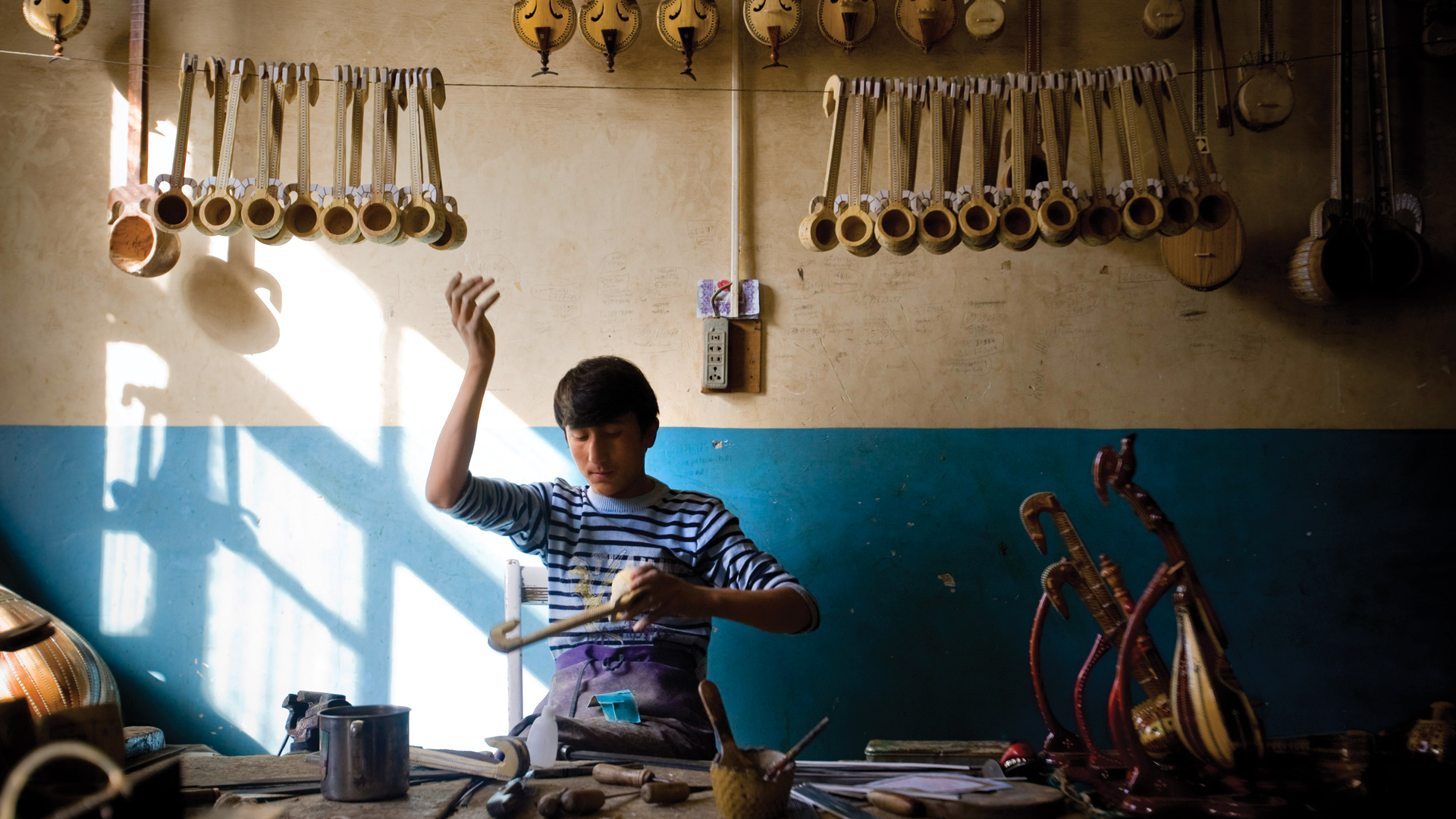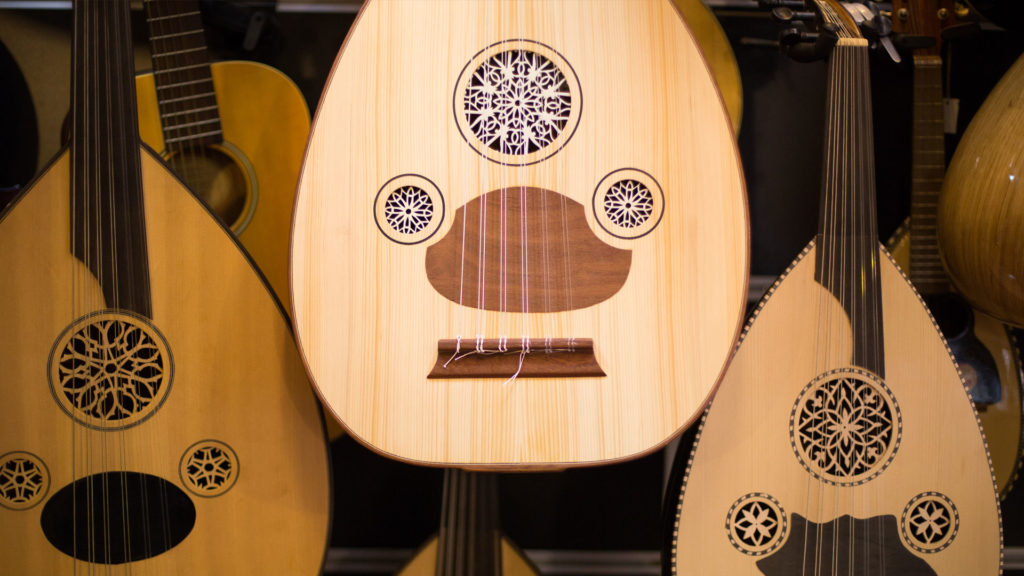
Salvation history is laced with song.
When the Israelites crossed the Red Sea, they celebrated by composing a song. They expressed joy in salvation by singing to the Lord and dancing in his presence.
There is a natural movement in the story of Exodus from salvation to song, from liberation to worship, from captivity to praise (Exodus 14:30–31, 15:1–21). As people in cultures around the world experience salvation through faith in Christ, that movement is repeated like a refrain.
There is an eschatological dimension to worship when it expresses a longing for the complete reign of the Lord over creation and a confidence that his kingdom will be established forever. The worship of people groups around the world anticipates worship at the end of time when the redeemed will be “singing a new song” before the throne of the Lamb (Rev. 14:1–5).
In Revelation, the redeemed sing a new song. Moses and the people of Israel sang a new song. When the church is planted in a culture, believers need a new song, not an imported song. They need to be able to sing the song of salvation in the language of their hearts.
Doxology means praise, and ethno means people, culture, or nation. Put them together and you get ethnodoxology, which means the worship of people groups or nations.
When the church is planted in a culture, believers need a new song,
not an imported song.
Ethnodoxology is an emerging field that blends ethnomusicology with missiology and studies in worship and the arts. It encourages artistic expression for the purpose of worship in Christian communities around the world.
I sat down over a cup of coffee one Sunday morning with Sue Whittaker, an ethnodoxologist who has worked in the Middle East for almost a decade. I wanted to understand more about ethnodoxology and why it’s essential to cross-cultural church planting.

A conversation about ethnodoxology and church planting
Eliza: Thank you so much for carving out some time to talk music and culture. Can you tell me how you got into ethnodoxology?
Sue: My background is in music and I have a Doctor of Musical Arts in piano performance and music education. After teaching music and serving in worship ministry for over thirty years in Arizona, I felt the Lord calling me to use my experience in cross-cultural ministry.
When our three children left the nest, I went back to school and completed a MA with a specialization in ethnomusicology. My husband and I moved to Central Asia in 2008 to learn about the cultural art forms in the area and to work with resident musicians and churches to develop locally created music for Christian worship. Now I’m finishing up a Doctor of Intercultural Studies at Fuller Seminary.
Eliza: How are ethnodoxologists concerned with contextualization of worship music?
Sue: Contextualization is a word often used by missiologists. I prefer the term “inculturation” because it centers on culture. Both words point to the concern that Christian truth, community, and worship should be expressed using local language and local art forms.
We want to be message-bearers, not culture-bearers. When a church smells of a foreign culture, people tend to feel less at home. Consequently, they fail to put down strong roots.
The incarnation of Christ is the best example of inculturation. Jesus took on flesh in first-century Bethlehem. He was truly God and truly a man of a particular time and culture, living a life that illustrated how the message must remain the same regardless of the context.
Eliza: In cross-cultural church planting efforts, why is it important for music to be inculturated?
Sue: As a pianist I understand that repetitive action develops memory. I really know pieces of music only after I’ve practiced numerous times.
Music is a way of knowing. Repetition of authentic worship through song—and in some cultural contexts, liturgy and dance—helps us know God in a deeper way. Inculturated art forms develop Christian identity and foster spiritual growth.
As the psalmist writes, “Deep calls to deep (Psalm 42:7).” Art reaches perceptive depths where faith resides.
Inculturated music is the music of the heart. Heart music is the music a person is surrounded with in childhood. It touches the soul and has the ability to change thinking and behavior. It impacts the lives of worshipers emotionally, cognitively, and behaviorally.
Music is a way of knowing . . .
Inculturated art forms develop Christian identity and foster spiritual growth.
Church planters should ask if we are fostering the development of believers who fit into their local cultural, historical, and traditional patterns, or are we fostering the development of believers that will remain at the periphery of their own society.
Eliza: Can you share an example of Christian worship music that has been appropriately inculturated?
Sue: Before I moved overseas, I visited with a leader in Arizona who regularly ministered in Central Asia. I wanted to get a sense of worship music that was locally produced. He opened a drawer full of CDs and cassettes, commenting, “These are all the same, except this one.”
Most of the music had imported tunes, rhythms, and lyrics from Western worship music, but one of the albums sounded different. It was by a vocalist named Sibel Üçal. I knew I had stumbled onto something worth studying.
You can listen to some of Sibel’s music on iTunes. The album Haykır Yüreğim, which means “Cry out my heart,” is a beautiful example of inculturated Christian worship music.
Eliza: What distinguished Sibel’s album from the rest?
Sue: Cultural authenticity in the music system, style, performance, and instrumentation.
Classical Middle Eastern melodic patterns called makams are scales with twenty-four pitches made up of semitones and microtones. From a Western perspective, vocalists like Sibel sing in the cracks on the piano. She very deliberately sings pitches that are not in our musical vocabulary.
The instrumentation is different, too. Rather than guitar, bass, and drums, you find the ney (flute), oud (lute), and bendir, a framed hand drum.
Eliza: What about the lyrics? Are they different from lyrics written for Western worship music?
Sue: Many are. The lyric draws on metaphors that are familiar and powerful within local culture. For example, “O holy river, flow into my garden, flow. Soaking, soaking this thirsty ground; flow with blessing.”
We want to be message-bearers, not culture-bearers.
Eliza: Are you ever concerned that using local musical styles that are associated with Islamic culture for Christian worship could lead to syncretism?
Sue: It’s important to understand that the makam music system is used throughout Central Asia, the Middle East, and North Africa by all the three Abrahamic faiths: Orthodox Christianity, Judaism, and Islam. It’s incorrect to associate makam music with one particular faith—Islam—as some Christian workers have in the past.
Syncretism means the mixing of something conflicting with Scripture into Christianity. Concerns that local music might conflict with Christian belief and practice should be addressed. But we should conduct an honest evaluation of the issue in light of the Word of God while keeping in mind the importance of local believers worshiping in culturally appropriate ways.
I remember a time when many churches in the US wouldn’t allow drums or saxophones to be played in the church because those instruments were associated with secular music—rock ‘n’ roll and jazz—not Christian worship. That position was an indication that churches were confusing musical forms with the content of Christian worship.
Eliza: As church planters think through issues surrounding inculturation, is there anything else they should keep in mind?
Sue: Yes, the situation now, especially in urban centers, is complex. Many people are bi-cultural, even multi-cultural. Workers in Middle Eastern and Central Asian countries would benefit from the consideration of Eastern music in these worship settings to complement the Western music already in use.
Eliza: Is there a resource you would recommend to Christian workers who want to learn more about how to encourage ethnodoxology?
Sue: As a practical resource, I would suggest Creating Local Arts Together: A Manual to Help Communities Reach Their Kingdom Goals by Brian Schrag and James R. Krabill.
Eliza Thomas is a writer with IMB. She lives with her family in Central Asia.

